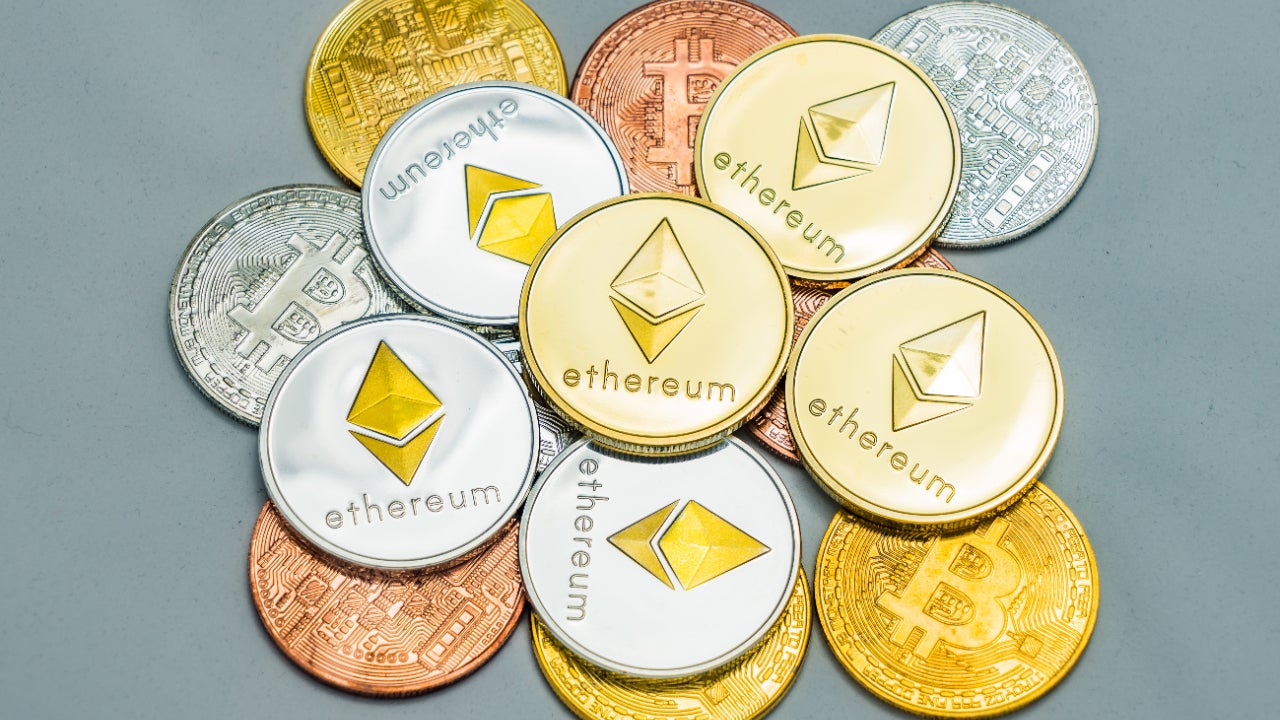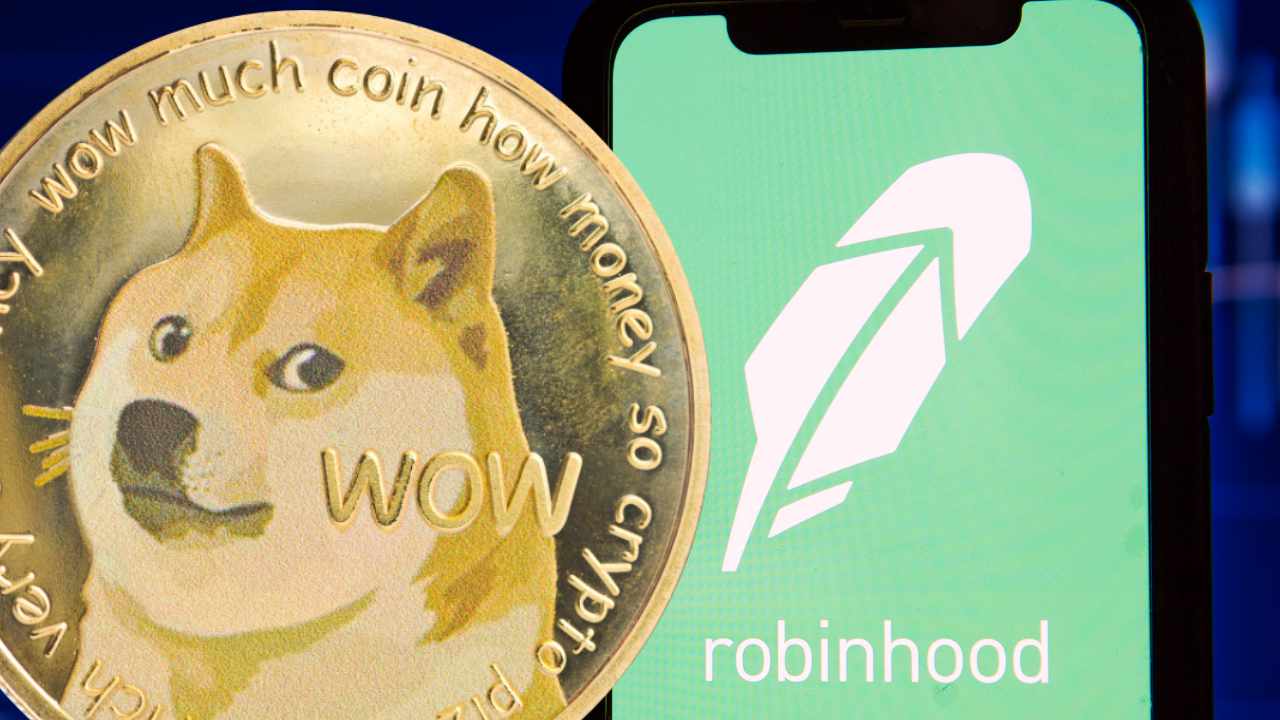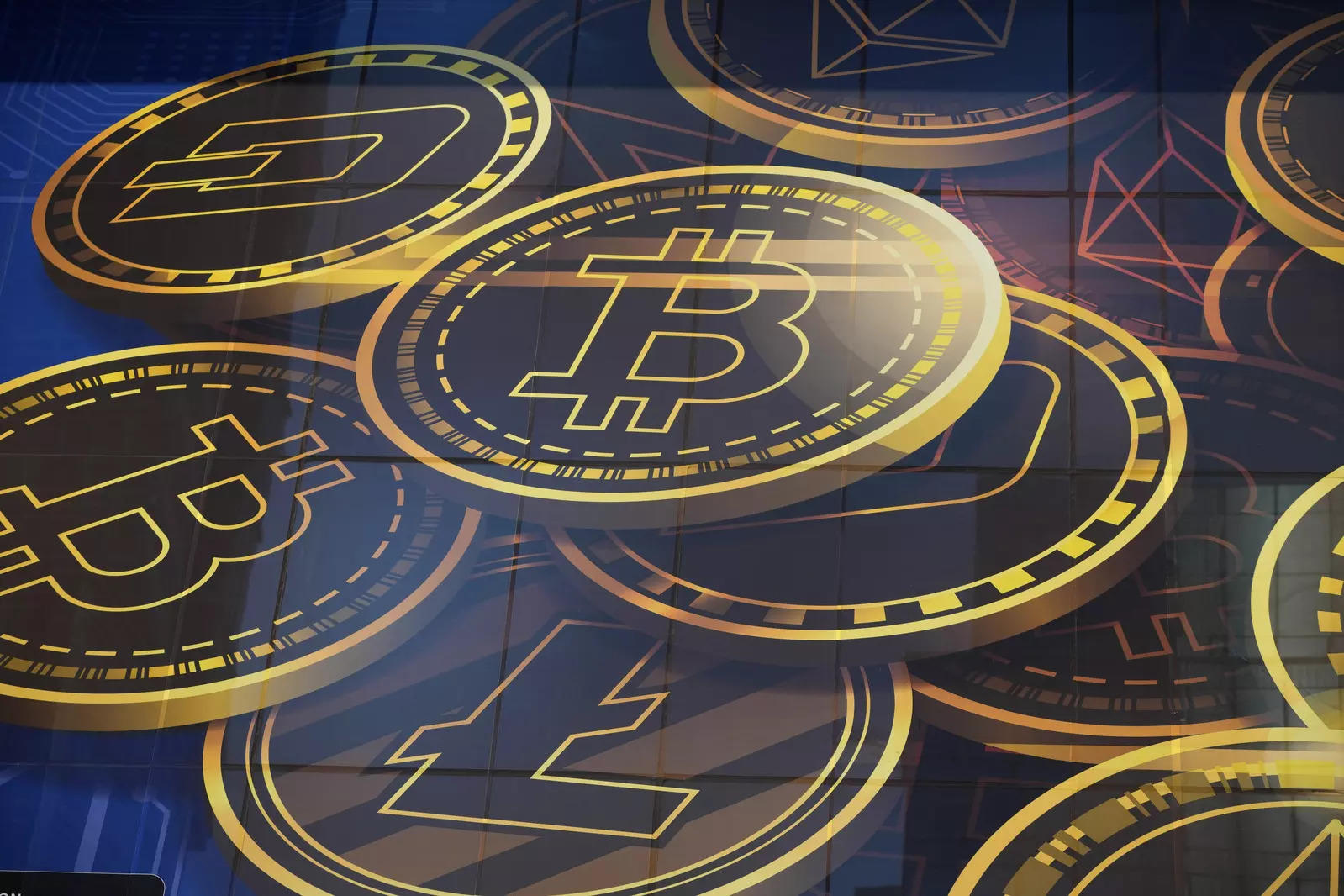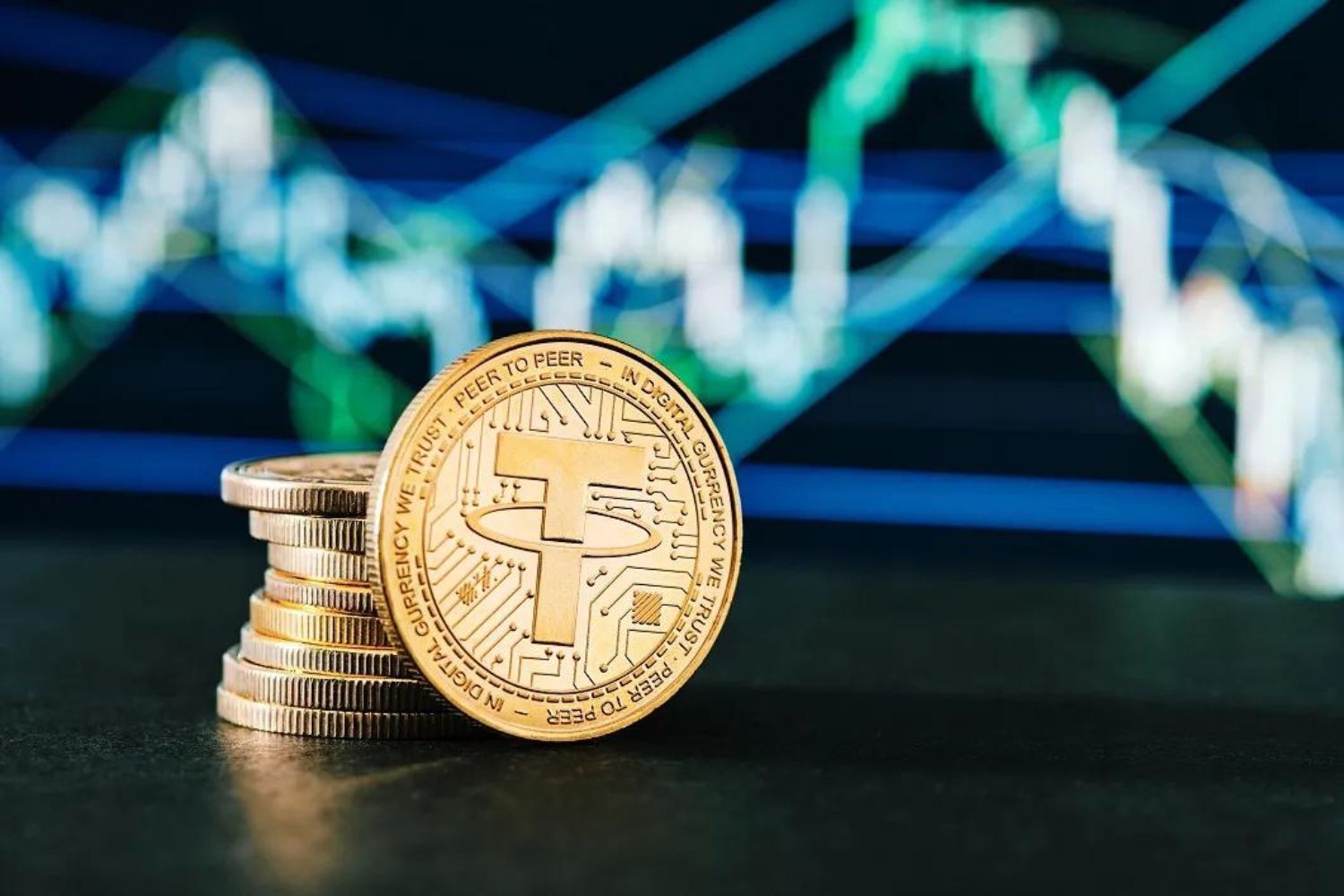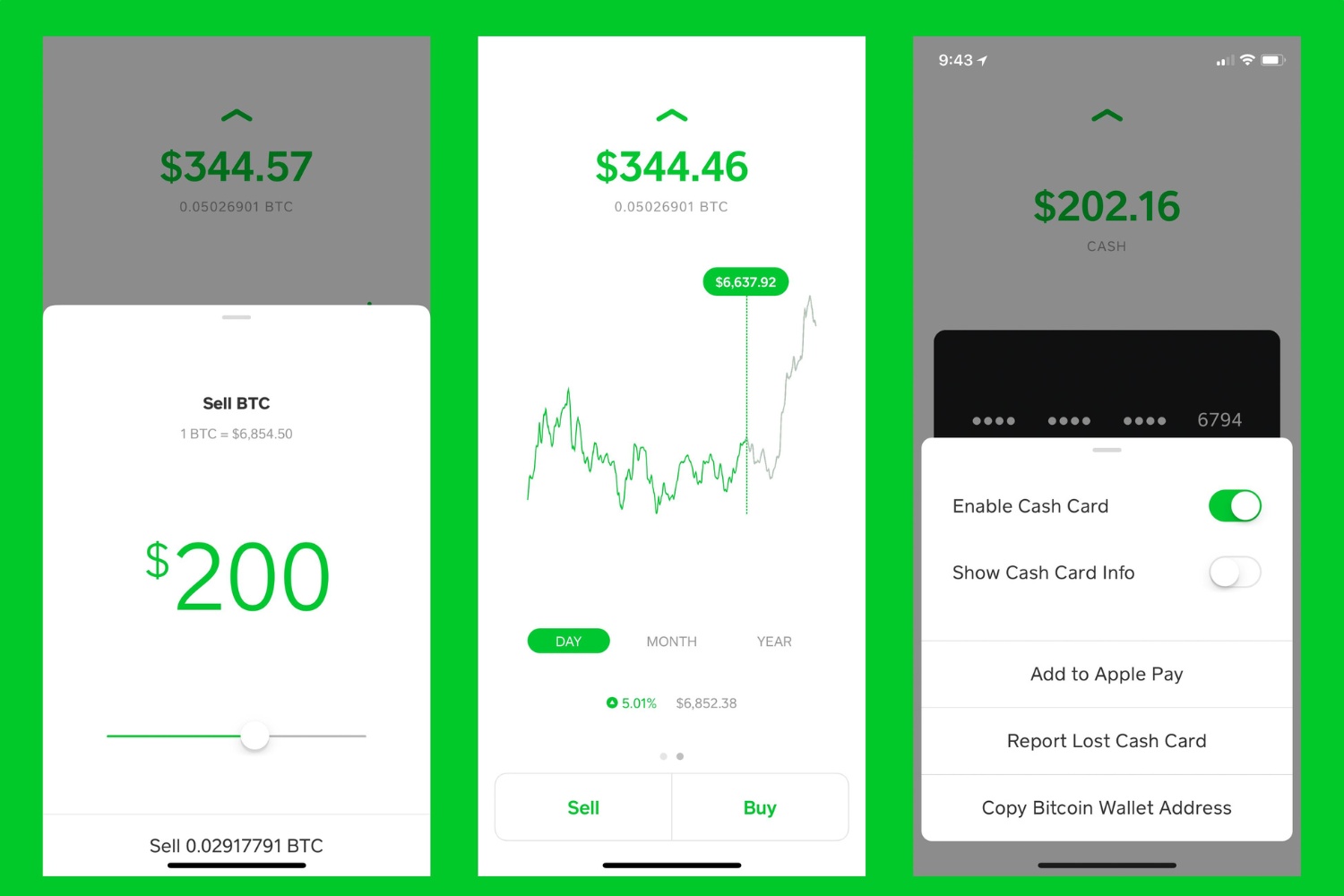Introduction:
With the rapid advancement of technology, the concept of currency has evolved beyond physical banknotes and coins. In today’s digital age, digital currency has emerged as a new form of financial exchange. Digital currency, also known as cryptocurrency, is a type of virtual or digital money that uses cryptography for secure financial transactions, control the creation of additional units, and verify the transfer of assets.
Unlike traditional fiat currencies, which are issued and regulated by central banks, digital currencies operate on decentralized networks and rely on complex algorithms and sophisticated encryption techniques. This allows for secure, transparent, and efficient transactions without the need for intermediaries such as banks or governments.
There are several types of digital currency, with Bitcoin being the most well-known and widely accepted. However, other cryptocurrencies such as Ethereum and Ripple are also gaining popularity. Each digital currency has its own set of features and use cases, making them unique in the evolving landscape of digital finance.
While digital currency offers numerous benefits, such as instant transactions, lower fees, and increased privacy, it also comes with its own set of challenges and drawbacks. Understanding how digital currency works, the underlying blockchain technology, and the ways to acquire and store it is essential for anyone interested in exploring this emerging financial ecosystem.
This article will provide an overview of digital currency, exploring its types, benefits, drawbacks, and how it works. It will also delve into the fascinating blockchain technology that powers digital currency and discuss the future prospects of this innovative financial system.
What is Digital Currency?
Digital currency, also known as cryptocurrency, is a form of virtual or digital money that exists solely in electronic form. Unlike traditional currencies issued by central banks, digital currencies are decentralized and operate on peer-to-peer networks.
One of the key features of digital currency is the use of cryptography to secure transactions and control the creation of new units. This cryptographic technology ensures the integrity and security of the digital currency system. It enables individuals to securely transfer digital assets without the need for intermediaries, such as banks or governments.
Digital currencies, such as Bitcoin, Ethereum, and Ripple, have gained significant traction in recent years. These cryptocurrencies offer unique advantages over traditional currencies. For example, digital currencies provide faster and cheaper transactions, often eliminating the need for middlemen and reducing associated fees. Additionally, digital currencies provide increased privacy, as transactions are pseudonymous and do not require the divulgence of personal information.
The value of digital currencies is determined by supply and demand factors within the market. Similar to other forms of investment, the price of digital currencies can fluctuate significantly, offering potential opportunities for profit for those who engage in trading.
It is important to note that digital currencies are not universally accepted as legal tender. Their acceptance and recognition as a means of payment vary across different countries and industries. However, with the growing acceptance and integration of digital currencies into mainstream financial systems, their popularity and usage are steadily increasing.
Overall, digital currency represents a transformative approach to financial transactions. It offers a decentralized and secure alternative to traditional forms of money, providing individuals with greater control over their financial assets and transactions.
Types of Digital Currency
The world of digital currency is diverse, with various cryptocurrencies offering unique features and use cases. Here are three of the most prominent types of digital currency:
- Bitcoin: Bitcoin is the pioneering cryptocurrency that started it all. Created in 2009 by an anonymous individual (or group) known as Satoshi Nakamoto, Bitcoin operates on a decentralized network called the blockchain. It is known for its limited supply, as there will only ever be 21 million bitcoins in existence. Bitcoin is widely accepted as a store of value and a medium of exchange, and it has gained significant popularity as an investment asset.
- Ethereum: Ethereum is a decentralized platform based on blockchain technology that enables the creation of smart contracts and decentralized applications (DApps). Its native cryptocurrency, called Ether (ETH), is used to facilitate transactions and incentivize participants to maintain the Ethereum network. Ethereum has gained attention for its potential to revolutionize industries such as finance, supply chain management, and decentralized finance (DeFi).
- Ripple: Ripple is a digital payment protocol designed to facilitate fast, low-cost international money transfers. Unlike Bitcoin and Ethereum, Ripple is not based on a blockchain, but rather uses a consensus algorithm called the Ripple Protocol Consensus Algorithm (RPCA). Ripple’s native cryptocurrency, XRP, acts as a bridge currency for facilitating transfers between different fiat currencies and has gained adoption by financial institutions for its efficiency and scalability.
These are just a few examples of the wide range of digital currencies available. Other popular cryptocurrencies include Litecoin, Bitcoin Cash, Cardano, and more. Each digital currency has its own unique features, development teams, communities, and potential use cases.
As the digital currency landscape continues to evolve, it is important to stay informed about the different types of digital currencies and their underlying technologies. This knowledge will help individuals make informed decisions about investing, trading, or utilizing digital currencies for various purposes.
Bitcoin
Bitcoin is the first and most well-known digital currency, created in 2009 by an anonymous person or group using the pseudonym Satoshi Nakamoto. Bitcoin operates on a decentralized network called the blockchain, which serves as a public ledger to record all transactions.
One of the key features of Bitcoin is its limited supply. There will only ever be 21 million bitcoins in existence, ensuring scarcity and potential value appreciation over time. Bitcoin can be obtained through a process called mining, where powerful computers solve complex mathematical problems to validate transactions and earn new bitcoins as a reward.
Bitcoin has gained popularity as a store of value and a medium of exchange. It has been embraced by merchants and individuals around the world for its ability to facilitate fast, secure, and low-cost transactions. Bitcoin transactions are pseudonymous, providing a certain level of privacy, although the blockchain records all transactions and can be analyzed by anyone.
As a decentralized currency, Bitcoin is not controlled by any central authority, such as a government or financial institution. This feature makes Bitcoin resistant to censorship and interference, giving individuals full control over their funds without the need for intermediaries.
Bitcoin has also emerged as a popular investment asset. Its price has experienced significant volatility, attracting investors looking to capitalize on price fluctuations. Some experts consider Bitcoin a hedge against traditional financial systems and inflation, as its value is not influenced by government policies or monetary manipulation.
However, it’s important to note that Bitcoin’s price volatility and regulatory uncertainty have raised concerns for some investors. Additionally, the energy consumption associated with Bitcoin mining has attracted criticism due to its environmental impact.
Despite these challenges, Bitcoin continues to have a prominent position in the digital currency ecosystem. Its technological innovation, wide acceptance, and the global community that supports it have solidified its status as the leading digital currency in the world today.
Ethereum
Ethereum is a decentralized platform that utilizes blockchain technology to enable the creation and execution of smart contracts and decentralized applications (DApps). It was proposed by Vitalik Buterin in late 2013 and launched in 2015.
One of the key distinctions of Ethereum is its native cryptocurrency called Ether (ETH), which serves as the fuel for running applications and executing smart contracts on the Ethereum network. Ethereum’s blockchain not only records transactions but also stores the code for executing these smart contracts, making it highly versatile for a wide range of applications.
Unlike Bitcoin, which primarily focuses on digital currency and financial transactions, Ethereum seeks to provide a decentralized platform for building and deploying decentralized applications. These DApps can range from decentralized finance (DeFi) protocols and digital identity solutions to gaming platforms and decentralized exchanges.
Ethereum’s smart contract functionality allows for the automation and self-execution of agreements without the need for intermediaries. This opens up new possibilities for creating decentralized systems that are transparent, secure, and resistant to censorship.
Ethereum’s popularity has grown significantly, evidenced by the rise of initial coin offerings (ICOs) that utilize the Ethereum network for fundraising. Through ICOs, projects can issue their own tokens on the Ethereum blockchain, enabling them to raise funds and give investors access to the project’s ecosystem.
However, Ethereum faces scalability challenges due to the increasing demand for its network. To address this issue, Ethereum is in the process of transitioning to Ethereum 2.0, which aims to improve scalability, security, and sustainability. This upgrade will introduce a new consensus mechanism, known as proof-of-stake (PoS), and help Ethereum handle a larger number of transactions more efficiently.
Ethereum has not only revolutionized the cryptocurrency space but also has the potential to disrupt various industries by providing a decentralized infrastructure for numerous applications. Its active developer community and continuous innovation have cemented Ethereum’s position as one of the most influential and widely adopted digital platforms in the world of digital currency.
Ripple
Ripple is a digital payment protocol and cryptocurrency that aims to provide fast, low-cost international money transfers and facilitate seamless transactions between financial institutions. Created in 2012, Ripple offers a decentralized platform for secure and efficient cross-border transactions.
One of the unique aspects of Ripple is its consensus algorithm, known as the Ripple Protocol Consensus Algorithm (RPCA). Unlike other cryptocurrencies that rely on mining, Ripple’s consensus algorithm enables fast and reliable transaction settlement within seconds. This makes Ripple an attractive option for financial institutions looking to reduce transaction times and costs.
Ripple’s native cryptocurrency is called XRP. It serves as a bridge currency, facilitating transfers between different fiat currencies across the Ripple network. The use of XRP eliminates the need for financial institutions to hold multiple currencies to facilitate international transactions, streamlining the process and reducing associated fees.
Ripple has gained significant traction in the banking industry and has partnered with numerous financial institutions globally. These partnerships enable faster cross-border payments and provide access to Ripple’s network and its liquidity solutions. Ripple’s technology has the potential to disrupt traditional correspondent banking systems, which are often slow and costly.
Despite its focus on facilitating transactions between financial institutions, Ripple aims for wider adoption and integration with other payment networks. RippleNet, Ripple’s global payment network, allows financial institutions to connect and transact seamlessly, regardless of their preferred payment systems or currencies.
While Ripple has seen success in the financial industry, it has also faced regulatory scrutiny due to its role as a cryptocurrency and the nature of its operations. These regulatory challenges have created some uncertainties regarding the future direction and potential limitations of Ripple’s network.
Nevertheless, Ripple’s innovative technology and partnerships continue to drive its growth and relevance in the digital currency landscape. With its emphasis on fast, efficient, and cost-effective cross-border transactions, Ripple has positioned itself as a major player in the realm of digital payments.
Benefits of Digital Currency
Digital currency, also known as cryptocurrency, offers several advantages over traditional forms of money. Here are some of the key benefits associated with digital currency:
- Decentralization: Digital currency operates on decentralized networks, avoiding the need for intermediaries such as banks or governments. This decentralization provides individuals with greater control over their funds and transactions.
- Fast and Convenient Transactions: Digital currency transactions are typically processed within minutes, regardless of geographical borders. Unlike traditional banking systems, which may involve lengthy verification processes, digital currency transfers are fast and efficient, enabling instant payment settlement.
- Lower Transaction Fees: Digital currency transactions often come with lower fees compared to traditional financial systems. With no intermediaries to facilitate transactions, digital currency eliminates additional charges typically associated with cross-border transfers or currency exchange.
- Increased Privacy: Digital currency transactions are generally pseudonymous, offering a certain level of privacy. While transactions are recorded on the blockchain, personal information associated with the transactions is often kept confidential, providing users with a degree of anonymity.
- Access for the Unbanked: Digital currency has the potential to provide financial services to the unbanked population, who may not have access to traditional banking services. Through a smartphone and internet connection, individuals can participate in the digital currency ecosystem, opening up financial opportunities and improving financial inclusion.
- Global Accessibility: Digital currency transcends borders and traditional financial infrastructures, allowing users to send and receive funds globally without the need for complex intermediaries or exchange processes. This accessibility fosters financial inclusion and enables seamless cross-border transactions.
- Inflation Resistance: Some digital currencies, like Bitcoin, have a limited supply, making them resistant to inflation caused by governments printing more money. This makes digital currencies potentially attractive as a store of value in uncertain economic climates.
- Innovation and Disruption: Digital currency and blockchain technology have paved the way for innovation and disruption in various industries. Smart contracts, decentralized finance (DeFi), and other applications built on top of digital currencies offer new possibilities for improving existing systems and introducing novel solutions.
While digital currency presents numerous benefits, it is important to consider its potential drawbacks and challenges. However, the advantages of digital currency have captured the attention of individuals, businesses, and governments, driving its adoption and fueling the transformation of the financial landscape.
Drawbacks of Digital Currency
While digital currency offers numerous benefits, it is important to consider the potential drawbacks and challenges associated with this emerging form of finance. Here are some of the key drawbacks of digital currency:
- Volatility: Digital currencies can be highly volatile, with their prices experiencing significant fluctuations in relatively short periods. This volatility poses risks for investors and can create uncertainty in the market.
- Regulatory Uncertainty: The regulatory landscape surrounding digital currency is still evolving, leading to uncertainty and varying legal frameworks in different jurisdictions. The lack of consistent regulation can create challenges for users and businesses, impacting the adoption and stability of digital currencies.
- Security Risks: While digital currencies utilize advanced cryptographic techniques for security, there have been instances of cyberattacks, thefts, and scams targeting digital currency platforms and users. The decentralized nature of digital currency can make it challenging to recover lost funds or hold perpetrators accountable.
- Energy Consumption: Many digital currency networks, such as Bitcoin, rely on complex computational processes that consume significant amounts of energy. This energy consumption has raised concerns regarding the environmental impact of digital currency mining and its long-term sustainability.
- Limited Acceptance: Despite the growing adoption of digital currency, its acceptance as a means of payment is still limited compared to traditional fiat currencies. Some businesses and individuals may be hesitant to accept digital currencies due to their volatility, regulatory uncertainties, or lack of infrastructure.
- Technical Challenges: Digital currency and blockchain technology are still in their early stages of development, and scalability issues, such as network congestion and transaction speed, can arise. The user experience for interacting with digital currencies is also less intuitive compared to traditional banking systems, posing challenges for widespread adoption.
- Irreversible Transactions: Once a digital currency transaction is confirmed on the blockchain, it is generally irreversible. While this feature provides security against fraud, it also means that users must exercise caution to ensure accurate and error-free transactions.
Despite these drawbacks, ongoing advancements in technology, regulatory developments, and increasing acceptance from businesses and governments are working to address these challenges. As digital currency continues to evolve, efforts are being made to enhance security, scalability, usability, and regulatory frameworks to drive its mainstream adoption and overcome these limitations.
How Digital Currency Works
Digital currency operates on a decentralized network and relies on blockchain technology to facilitate secure and efficient transactions. Here is a high-level overview of how digital currency works:
1. Decentralized Network: Digital currency operates on a decentralized network of computers, known as nodes. These nodes maintain a copy of the blockchain, a public ledger that records all transactions and serves as a transparent record of the digital currency’s history.
2. Transactions: When someone initiates a transaction using digital currency, it is broadcasted to the network. The transaction typically includes the sender’s digital wallet address, the receiver’s address, the amount being transferred, and any additional information.
3. Verification and Validation: The nodes in the network validate the transaction to ensure that the sender has sufficient funds and that the transaction meets the required criteria. This verification process involves solving complex mathematical problems that require computational power.
4. Block Creation: Once a group of transactions is verified and validated, they are combined into a block. Each block contains a unique identifier, a timestamp, and a reference to the previous block, creating a chain-like structure.
5. Consensus Mechanism: To maintain the integrity of the blockchain, digital currency networks employ consensus mechanisms. This consensus ensures that all nodes agree on the order and validity of transactions. Popular consensus mechanisms include Proof-of-Work (PoW), Proof-of-Stake (PoS), and variations in between.
6. Block Confirmation and Addition: Once a block is created, it is propagated across the network, and nodes work to confirm its validity. In PoW-based networks like Bitcoin, miners compete to solve complex mathematical puzzles to add the block to the blockchain. Once a block is added, it becomes a permanent part of the blockchain.
7. Security and Cryptography: Digital currency relies on cryptographic techniques to secure transactions and protect the integrity of the blockchain. Cryptography ensures that transactions are tamper-proof and that only rightful owners can transfer funds from their digital wallets.
8. Wallets and Keys: Digital currency users store their funds in digital wallets. Wallets come with public and private keys, where the public key is used to identify the wallet, and the private key is used to sign and authorize transactions. Wallets can be software-based, hardware devices, or even paper-based for offline storage.
9. Transaction Broadcasting and Confirmation: Once a transaction is added to the blockchain, it becomes visible to all network participants. Other nodes validate the transaction, ensuring its inclusion in subsequent blocks for additional confirmations. The number of confirmations required depends on the digital currency network and the level of security desired.
In summary, digital currency operates through a decentralized network, leveraging blockchain technology, consensus mechanisms, cryptographic techniques, and digital wallets. This combination of technologies and processes enables secure, transparent, and efficient peer-to-peer transactions, without the need for intermediaries like banks or governments.
Blockchain Technology
Blockchain technology is a foundational pillar of digital currency and plays a vital role in ensuring secure and transparent transactions. Here is an overview of blockchain technology and its key features:
Decentralization: At its core, blockchain technology operates as a decentralized network of computers, known as nodes. These nodes collectively maintain a distributed ledger, called the blockchain, which records all transactions in a chronological and immutable manner.
Transparency: The blockchain is a transparent and publicly accessible ledger. Each transaction is recorded in a block, which is linked to the previous block, creating a chain of blocks. As a result, anyone can view the transaction history, enhancing transparency and trust.
Security: Blockchain ensures the security of transactions through its cryptographic techniques. Each transaction is digitally signed, and once recorded on the blockchain, it becomes virtually impossible to alter. Additionally, the decentralized nature of the blockchain eliminates single points of failure, making it resilient to cyberattacks.
Consensus Mechanisms: Consensus mechanisms play a crucial role in maintaining the integrity of the blockchain. They are the protocols used to verify and validate transactions and ensure that all nodes in the network agree on the state of the blockchain. Popular consensus mechanisms include Proof-of-Work (PoW), Proof-of-Stake (PoS), and variations like Delegated Proof-of-Stake (DPoS).
Smart Contracts: Blockchain technology enables the implementation of smart contracts, which are self-executing agreements with predefined conditions. Smart contracts eliminate the need for intermediaries, allowing for trustless and automated transactions. Ethereum, in particular, is known for its robust support for smart contracts.
Privacy: Although the blockchain provides transparency, it can also offer varying levels of privacy. While public blockchains like Bitcoin have transparent transactions, other blockchain platforms offer privacy features, allowing users to shield their identities or keep certain transaction details confidential.
Scalability: Scalability has been a challenge for blockchain technology, especially as the adoption of digital currencies grows. The ability of a blockchain network to handle a large number of transactions per second determines its scalability. Various scaling solutions, such as sharding and layer-two protocols, are being developed to enhance blockchain scalability.
Use Cases Beyond Currency: While blockchain technology gained recognition through digital currency applications, its potential extends beyond finance. Blockchain has found utility in supply chain management, identity verification, voting systems, healthcare, and many other industries where secure and transparent record-keeping is crucial.
Overall, blockchain technology revolutionizes how transactions are conducted, introducing decentralization, transparency, security, and automation. It forms the backbone of digital currency and holds promise for transforming various sectors by providing a tamper-resistant and trustless framework for conducting digital transactions.
How to Acquire Digital Currency
Acquiring digital currency, such as Bitcoin or Ethereum, involves a few key steps. Here is a general overview of the process:
- Choose a Digital Currency Exchange: Start by selecting a reputable digital currency exchange. These online platforms allow you to buy, sell, and trade various digital currencies. Research different exchanges and consider factors such as security, fees, available cryptocurrencies, and user experience.
- Create an Account: Sign up for an account on the chosen exchange. This usually involves providing personal information and completing security verification processes, which may require submitting identification documents.
- Link a Payment Method: Connect a payment method to your exchange account. This can be a bank account, credit/debit card, or alternative payment methods supported by the exchange. Make sure to review the payment method options, associated fees, and transaction limits offered by the exchange.
- Place an Order: Once your account is set up and the payment method is linked, you can place a buy order for the desired digital currency. Specify the amount of digital currency you want to purchase or the amount of fiat currency you are willing to spend.
- Securely Store Your Digital Currency: After acquiring digital currency, it is essential to store it securely. Consider utilizing a digital wallet, a software application that enables you to store, send, and receive digital currencies. Wallets come in various forms, including web-based, software, and hardware wallets. Choose a reputable wallet provider and follow their security guidelines to safeguard your digital currency.
- Stay Informed: Keep yourself updated on the digital currency market and its trends. Stay informed about market developments, regulatory changes, and security practices to make informed decisions regarding your digital currency holdings.
It is important to note that the specifics of acquiring digital currency may vary depending on the exchange, country of residence, and the type of digital currency being acquired. Some digital currencies may have additional steps or requirements for purchase.
Before making any transactions, thoroughly research the chosen exchange, consider your risk tolerance and investment goals, and familiarize yourself with the fees and terms of the exchange. Engaging in secure practices, such as using strong passwords, enabling two-factor authentication, and regularly updating your software, will help protect your digital currency investment.
Overall, acquiring digital currency requires choosing a reputable exchange, creating an account, linking a payment method, placing an order, securely storing your digital currency, and staying informed about the market. By following these steps and conducting thorough research, you can begin your journey into the world of digital currency.
Storing Digital Currency
Storing digital currency securely is of utmost importance to protect your investment. Digital currency, such as Bitcoin or Ethereum, is stored in digital wallets, which can come in different forms. Here are some key considerations when it comes to storing your digital currency:
1. Choose the Right Wallet: There are various types of digital wallets available, each with its own advantages and security features.
– Software Wallets: These are applications that you install on your computer or mobile device. They offer convenience and easy access to your digital currency but may be vulnerable to malware or hacking attempts. Examples include Exodus, Jaxx, and Atomic Wallet.
– Hardware Wallets: These physical devices provide an extra layer of security by keeping your digital currency offline. They are not connected to the internet when not in use, reducing the risk of online threats. Hardware wallets, such as Ledger and Trezor, are considered one of the most secure options.
– Paper Wallets: Paper wallets involve printing out your digital currency keys on a piece of paper. They are offline storage options that can be physically secured. However, they require caution and proper storage to prevent loss or damage.
2. Backup Your Wallet: No matter what type of wallet you choose, always create a backup. Your wallet contains private keys that grant access to your digital currency. Making a backup ensures that you can recover your funds in case of loss, theft, or device failure. Keep backup copies in secure locations, such as encrypted external storage devices or offline storage.
3. Enable Strong Security Measures: Strengthen the security of your wallet by taking appropriate measures:
– Use strong, unique passwords and enable two-factor authentication (2FA) where available.
– Keep your wallet software and devices updated with the latest security patches.
– Be cautious of phishing attempts and only download wallets or updates from trusted sources.
– Consider using a dedicated, offline computer or a separate device for your digital currency transactions.
4. Diversify Storage: Consider spreading your digital currency across multiple wallets and storage options. This reduces the risk of losing all your funds in case of a security breach or loss of access to one particular wallet.
5. Be Mindful of Online Exchanges: If using an online exchange to store your digital currency, be aware of the potential risks. Online exchanges are more susceptible to hacking attempts and theft. It is generally recommended to transfer your digital currency to a secure offline wallet for long-term storage instead of leaving it on an exchange for an extended period.
6. Stay Informed: Keep yourself informed about the latest security practices and developments in digital currency storage. Regularly educate yourself on new security measures and be vigilant of emerging risks to protect your digital currency investment.
Remember, the security of your digital currency ultimately relies on your actions and the precautions you take. By choosing the right wallet, implementing strong security measures, and staying informed, you can safeguard your digital currency holdings and have peace of mind.
Using Digital Currency for Transactions
Digital currency can be used as a medium of exchange for various goods and services. Here are some key aspects to consider when using digital currency for transactions:
1. Merchant Acceptance: Check if the merchant or service provider accepts digital currency as a form of payment. Many online and offline businesses now accept digital currency, especially in industries such as e-commerce, travel, and technology. Look for signs or check their websites for payment options.
2. QR Code or Wallet Address: When making a payment with digital currency, you will need the recipient’s digital wallet address. This is usually represented as a QR code that can be scanned with a digital wallet app or as a string of alphanumeric characters. Ensure the accuracy of the address before initiating the transaction to prevent sending funds to the wrong recipient.
3. Transaction Fees: Familiarize yourself with the transaction fees associated with using digital currency. While digital currency transactions often have lower fees compared to traditional payment methods, there may still be minimal charges for processing your transactions. Check the fee structure of your digital wallet or exchange platform for details.
4. Transaction Speed: Digital currency transactions typically have a faster processing time compared to traditional banking systems. However, the transaction speed can vary depending on the digital currency and network congestion. During times of high network activity, transaction processing times may be longer. It is important to be aware of potential delays when timing your transactions.
5. Confirmations: After initiating a transaction, it goes through a verification process on the blockchain network. The transaction is confirmed when it is included in a block and added to the blockchain. The number of required confirmations varies among digital currencies and wallets. Generally, more confirmations indicate a higher level of security. Merchants may require a specific number of confirmations before considering the transaction complete.
6. Volatility: Keep in mind that the value of digital currency can be volatile, which means its price can fluctuate significantly. If there is a delay between initiating a transaction and its confirmation, the value of the digital currency may change. This volatility can impact the cost of the goods or services you are purchasing and should be taken into consideration.
7. Secure Practices: Maintain good security practices when using digital currency for transactions. Safeguard your digital wallet by using strong, unique passwords and enabling two-factor authentication. Regularly update your wallet software and be cautious of phishing attempts or suspicious websites that may attempt to steal your digital currency.
8. Record Keeping: Keep track of your digital currency transactions for accounting and tax purposes. Ensure you have proper records of transaction dates, amounts, and recipient addresses. Some digital wallets provide transaction history within their interface, or you can manually record the details in a separate document or spreadsheet.
By considering these aspects and following secure practices, using digital currency for transactions can provide a convenient and seamless payment experience. As digital currency continues to gain acceptance, it offers an alternative and innovative way to conduct financial transactions globally.
Future of Digital Currency
The future of digital currency is filled with exciting possibilities and potential transformations in the global financial landscape. Here are some trends and developments that hint at what the future may hold for digital currency:
1. Mainstream Adoption: Digital currency is gradually moving towards mainstream adoption. As more individuals, businesses, and even governments recognize its benefits, the acceptance and usage of digital currency are expected to increase. This could lead to further integration of digital currency into everyday financial transactions.
2. Central Bank Digital Currencies (CBDCs): Central banks worldwide are exploring the concept of introducing their own digital currencies. CBDCs could provide governments with more control over their monetary systems while leveraging the advantages of blockchain technology. The development and implementation of CBDCs have the potential to reshape the relationship between traditional fiat currencies and digital currencies.
3. Improved Scalability: Scalability remains a challenge for many digital currency networks. However, ongoing research and development efforts aim to create solutions that can handle a significantly higher number of transactions per second. Innovations such as sharding, layer-two protocols, and advancements in blockchain consensus mechanisms may greatly improve scalability in the future.
4. Enhanced Privacy: As digital currency evolves, addressing privacy concerns becomes increasingly important. With advancements in cryptographic techniques, privacy-focused digital currencies are emerging, offering users more control over their financial information and transactional privacy. Additionally, developments in privacy-enhancing technologies, like Zero-Knowledge Proofs, may further enhance privacy without compromising security.
5. Interoperability and Cross-Chain Compatibility: Interoperability between different digital currency networks is gaining attention, enabling seamless and secure transactions between various blockchain platforms. Efforts are being made to develop protocols and technologies that foster interoperability and bridge the gap between different digital currencies, creating a more interconnected and accessible digital currency ecosystem.
6. Integration in Industry Verticals: Digital currency is poised to have a significant impact on various industry verticals beyond finance. Industries such as supply chain management, healthcare, gaming, and real estate are exploring ways to leverage digital currencies and blockchain technology to improve transparency, security, and efficiency in their operations.
7. Emergence of Stablecoins: Stablecoins, digital currencies pegged to stable assets like fiat currencies or commodities, aim to mitigate the volatility associated with cryptocurrencies. The rise of stablecoins provides stability in pricing, making them attractive for everyday transactions and creating potential bridges between traditional financial systems and digital currencies.
8. Regulation and Legal Frameworks: As the digital currency ecosystem matures, regulatory frameworks are being developed to address concerns related to fraud, money laundering, and investor protection. The establishment of clear and comprehensive regulations can provide a framework for the responsible growth and adoption of digital currencies while maintaining market integrity.
These trends and developments signify the potential for significant advancements and changes in the future of digital currency. While challenges and uncertainties remain, the integration of digital currencies into mainstream financial systems, advancements in technology, and regulatory developments point to a promising future for digital currency on a global scale.
Conclusion
Digital currency has emerged as a transformative force in the global financial landscape. Through decentralized networks and blockchain technology, digital currency offers benefits such as fast transactions, lower fees, increased privacy, and global accessibility. Bitcoin, Ethereum, Ripple, and other digital currencies have gained recognition, each with its own unique features and use cases.
While digital currency presents numerous advantages, it also poses challenges. Volatility, regulatory uncertainties, security risks, and scalability issues are important factors to consider. However, ongoing technological advancements, regulatory developments, and increasing mainstream adoption efforts are working to address these challenges and drive the future of digital currency.
The future of digital currency holds promise for mainstream adoption, the development of central bank digital currencies, enhanced scalability, improved privacy solutions, interoperability, and integration across industries. Stablecoins and clearer regulatory frameworks may further accelerate the adoption and acceptance of digital currencies.
As individuals and businesses explore the usage of digital currency, it is crucial to understand the process of acquiring and storing digital currency securely. Strong security practices, diverse storage solutions, and staying informed about potential risks are essential for protecting investments and ensuring a seamless digital currency experience.
In summary, digital currency continues to reshape the financial landscape, offering individuals greater control and accessibility over their funds. Its potential for efficiency, transparency, and innovation make it an exciting area to watch as it evolves and becomes an integral part of our everyday lives.







